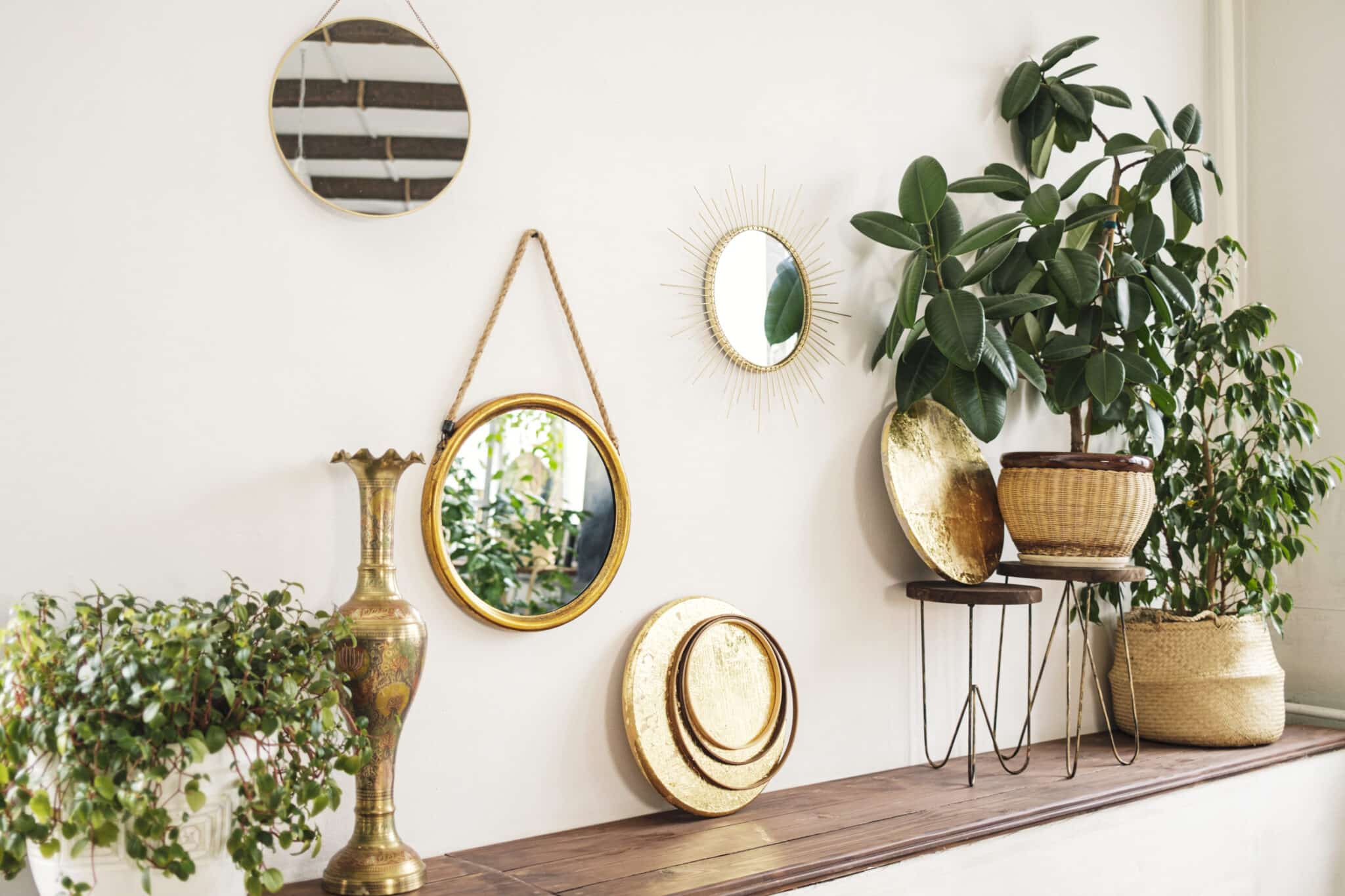Did you know that a variety of pollutants circulate freely in your apartment? Benzene, ammonia, formaldehyde, trichloroethylene… Whether it’s due to paint, cleaning products or volatile organic compounds. The air in your living room may contain more pollutants than the air you breathe on your balcony! With most of the coming months to be spent indoors, your air quality could be in for a real treat!
But don’t worry, that’s when green plants come to the rescue! As well as adding a touch of greenery and freshness, some plants also have the natural ability to filter and purify the air by eliminating pollutants.
Even NASA recommends the use of plants to reduce the level of pollution in our homes: one houseplant for every 100 square feet (or 9 square meters) of living space.
Here are 10 options for you to choose from according to your preferences!
Rubber (Ficus Elastica)
This plant is appreciated for its beauty and its ability to reduce volatile organic compounds (VOCs), absorbing formaldehyde and carbon monoxide in particular. It will fit perfectly into your living room, bedroom or even your hallway. It requires good exposure to indirect light and moderate watering.
À noter – Cette plante est toxique pour les animaux.
Ivy (Hedera Helix)
Ivy is both an elegant and beneficial plant, as it filters the air by removing toxins such as benzene, trichloroethylene and formaldehyde. You can hang it in your bathroom or let it climb along a shelf to add a green touch to your decor. Easy to care for, ivy thrives in shade, but its soil needs to remain moist and well-drained.
Dragonnier (Dracaena)
This plant, which is easy to find just about anywhere, comes in many shapes and colors. Effective at eliminating formaldehyde, benzene and trichloroethylene, it prefers bright but indirect light and moderate watering. It will regulate humidity in your room and, as a bonus, reduce your stress levels – it’s almost magic!
Moonflower (Spathiphyllum)
Also known as the “lily of peace”, this plant is attractive for its superb white flowers and its ability to detoxify the air of pollutants such as ammonia, formaldehyde, benzene and xylene. It tolerates partial shade and requires regular watering. To maximize its purifying power, remember to dust its leaves regularly.
Pothos (Epipremnum Aureum)
Devil’s ivy is a hardy, easy-care plant that will help make the air you breathe every day a little healthier! As well as being ideal for eliminating common indoor air pollutants, its heart-shaped leaves vary in color and pattern, so it’s sure to add style to your home.
Cat’s tongue (Sansevieria Trifasciata)
With its erect, sword-shaped leaves, this plant, also known as “mother-in-law’s tongue”, combines beauty and simplicity. Its particularity lies in its ability to filter toxins and generate oxygen at night, making it ideal for the bedroom. Robust, it requires little watering and can thrive in low-light conditions.
Note – This plant is moderately toxic to animals.
Boston fern (Nephrolepis Exaltata)
According to a NASA study, it’s the ideal houseplant for eliminating formaldehyde. Native to tropical forests, it thrives in low-light, humid environments – making it ideal for your bathroom. Don’t hesitate to hang it up!
Aloe (Aloe Vera)
In addition to its beneficial properties for the skin, having aloe in your home can do wonders! It helps improve indoor air quality by eliminating formaldehyde and benzene, and ranks among the best for regenerating oxygen in a room. This succulent loves bright light and requires moderate watering.
Chrysanthemum (Chrysanthemum Morifolium)
Chrysanthemums are those beautiful flowering plants you see everywhere in autumn! According to the NASA study, this plant is the champion of air purification, eliminating a whole range of pollutants. Once it has graced your balcony this autumn, it’s perfectly feasible to bring it into the apartment once it’s in bloom. It requires exposure to direct sunlight and regular watering.
Anthurium (Anthurium Andraeanum)
Nicknamed “tongue of fire” for its vivid, heart-shaped flowers in shades of red, purple, pink, white and orange, has the ability to eliminate toxins such as ammonia, xylene and formaldehyde. It thrives in generous but subdued light.
À noter – Cette plante est toxique pour les animaux.
By adding air-purifying houseplants to your apartment, you can not only improve the quality of the air you breathe every day, but also create a healthier, more soothing environment.
Also read: 4-season herbs? It’s possible!
